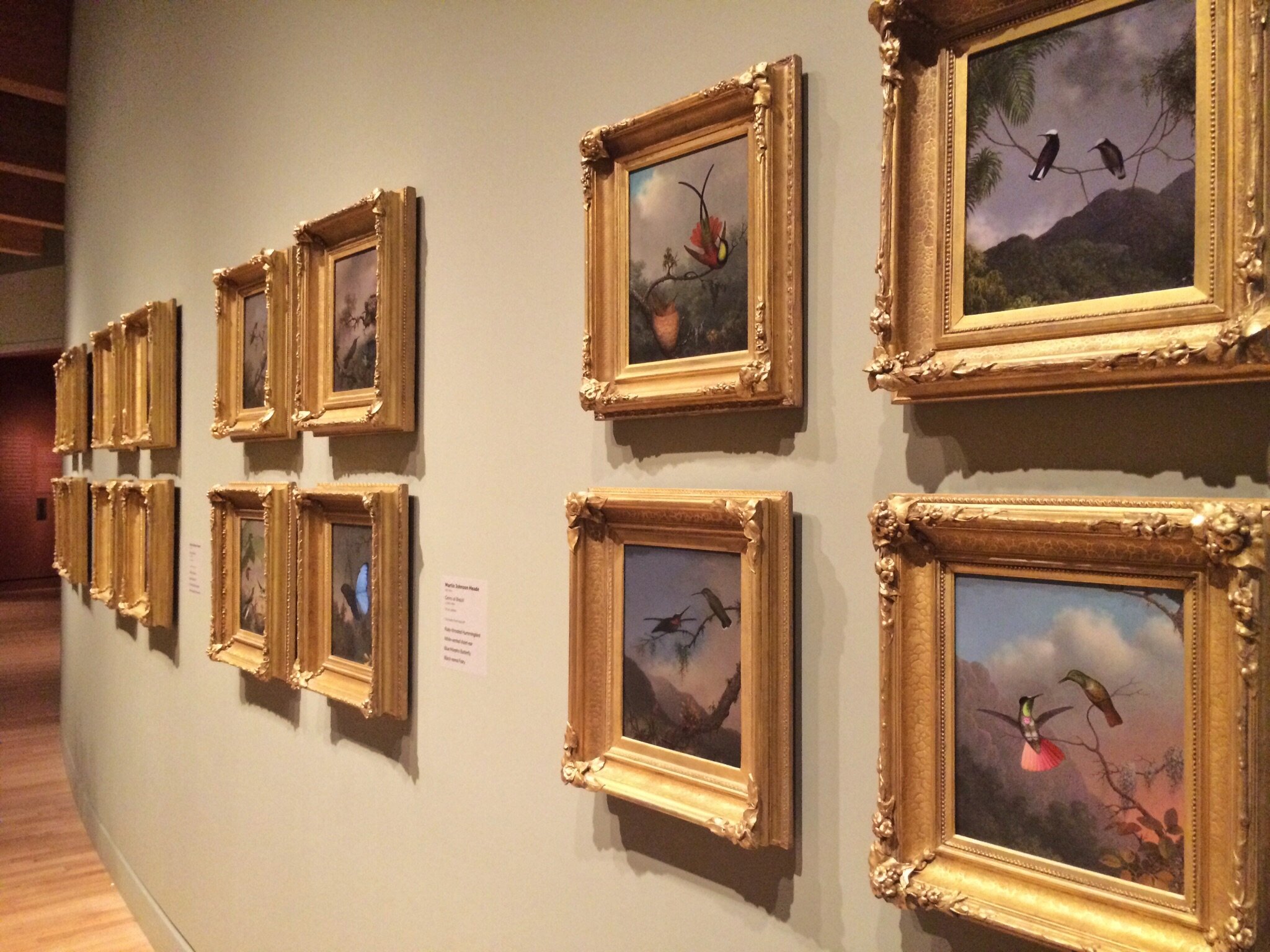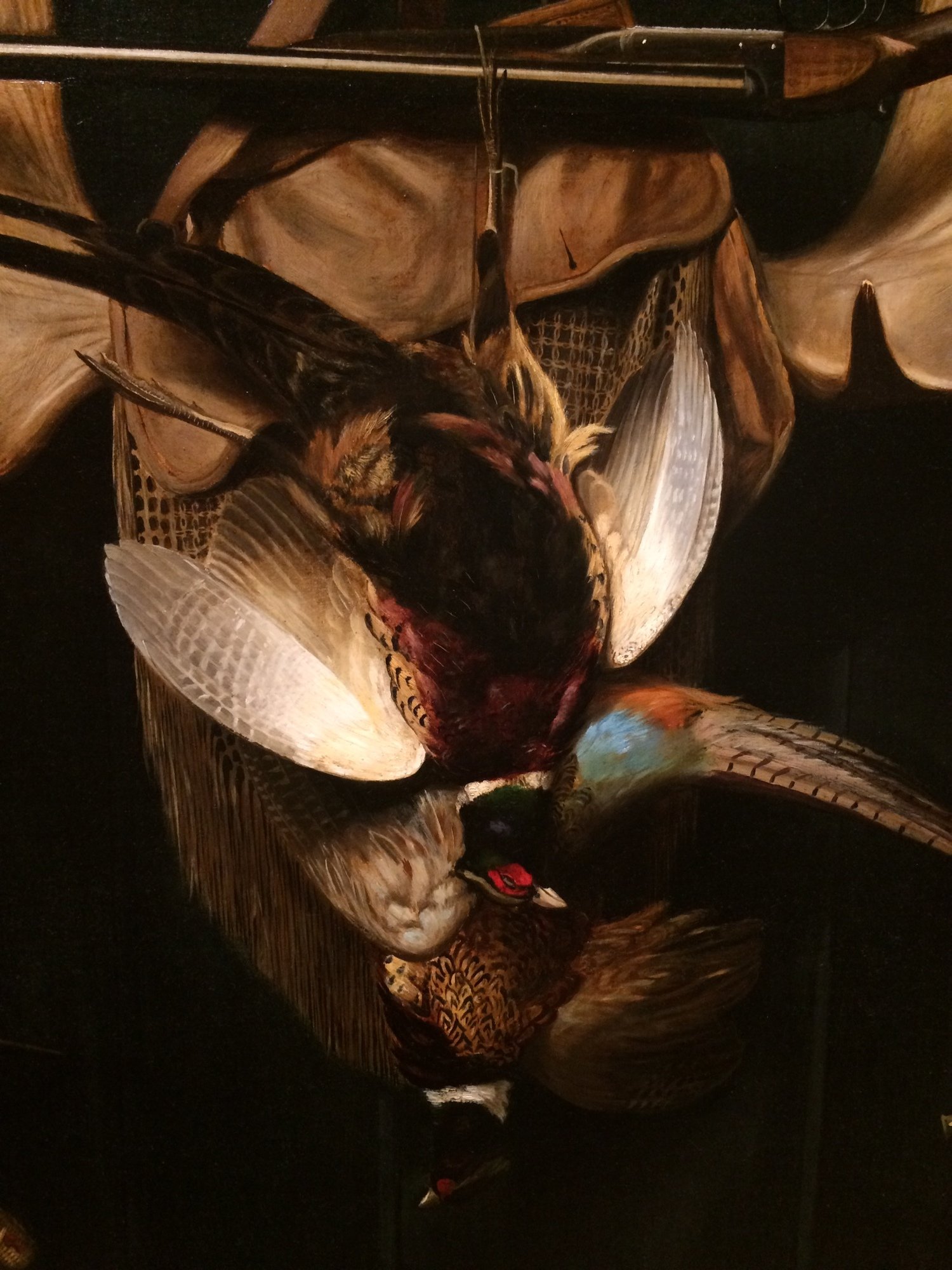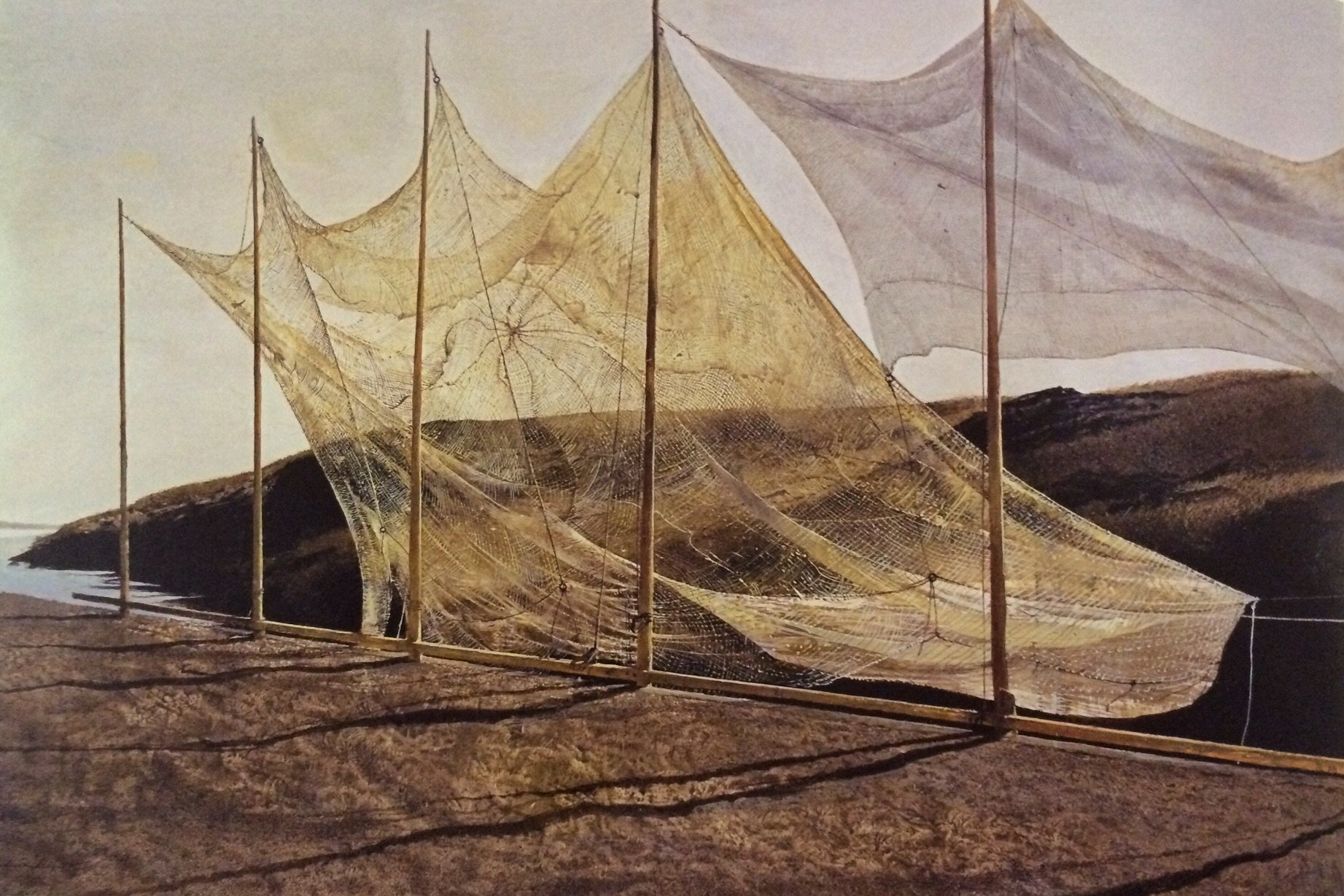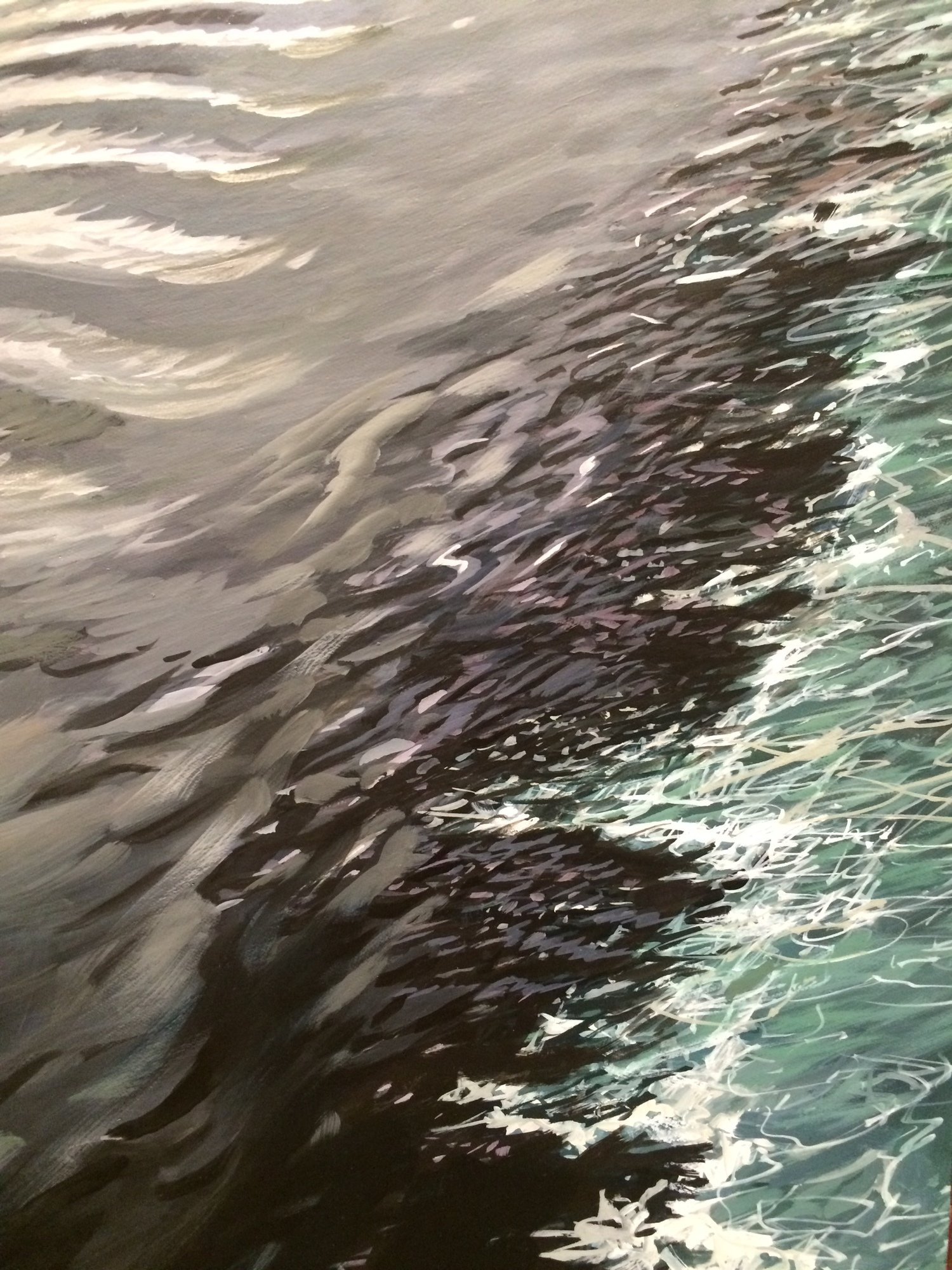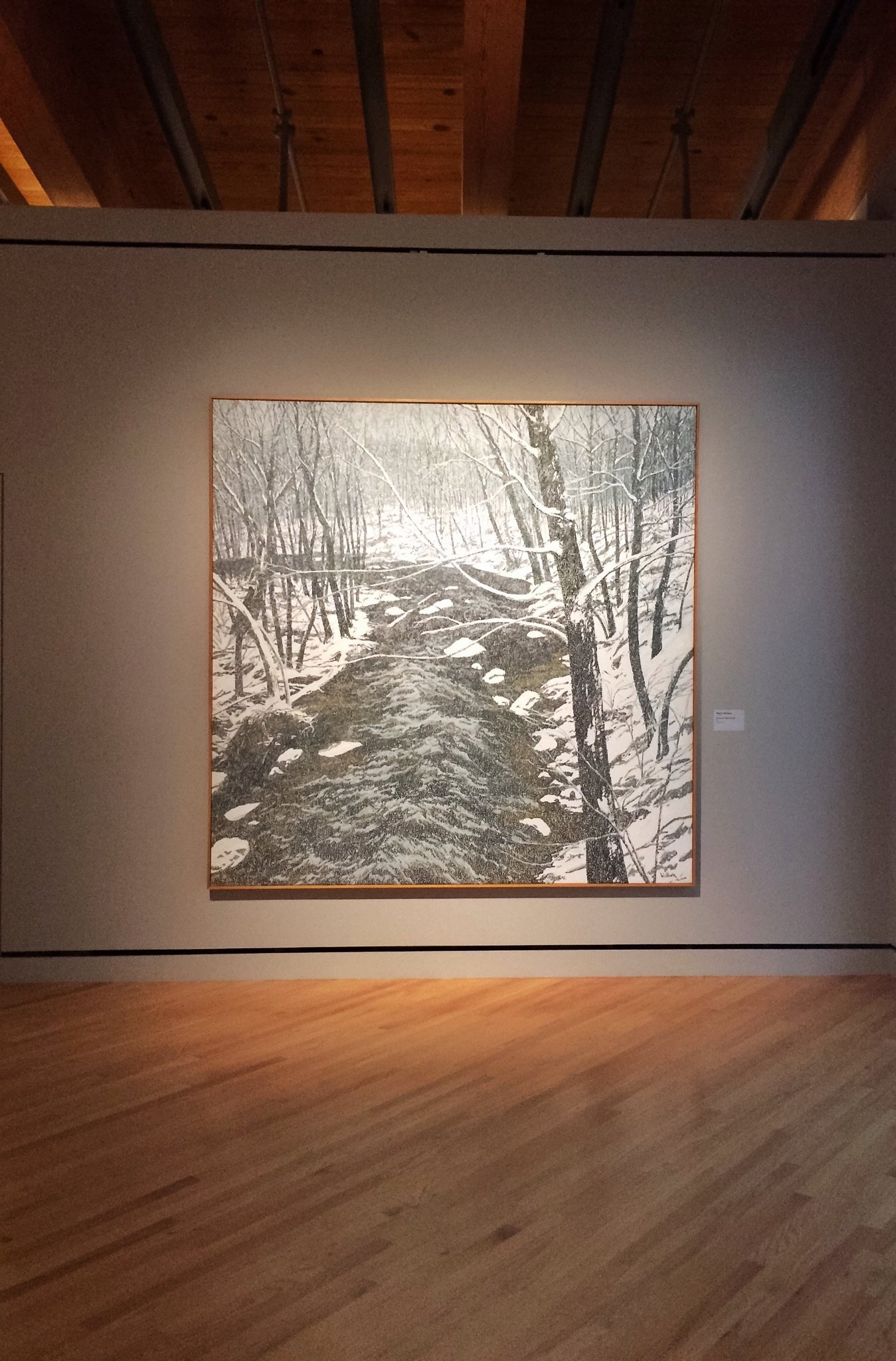Crystal Bridges | Curated Favorites
John James Audubon, Wild Turkey Cock, Hen and Young, 1826.
The last few blog posts in this series on Crystal Bridges covered my stay in Bentonville, the Picturing the Americas Exhibition and Symposium, a quasi-religious response with a Thomas Moran painting and some thoughts on the museum. While I've covered some of the work in the museum over previous posts, there were still several pieces I wanted to highlight from the permanent collection, starting with Audubon's turkeys.
Anyone that knows me understands my odd fascination with drawing turkeys. There's this grotesque yet sublime beauty mixed up in a bird that is sharp as a tack. The northeast corner of South Carolina is one of the prime turkey hunting spots in the southeast and in the spring/fall they are everywhere. My grandparents always had a few wandering around the farm in western Pennsylvania too, so guess you can say I've grown attached to them over the years and in an odd way they symbolize home for me. Knowing this can only explain a little of the sheer excitement when I walked in the first permanent collection gallery only to have Audubon's painting of wild turkeys be the first thing I see.
Martin Johnson Heade, The Gems of Brazil, 1863-1864.
In a similar vein I was also looking forward to seeing so many of Martin Johnson Heade's The Gems of Brazil paintings in one place. There was really something spectacular about the way they were grouped for display by the museum. It felt like they paid close attention to the scope of paintings he did in this series and his intentions to publish them in a book format. One of Heade's slightly larger paintings, Two Hummingbirds with an Orchid, was included in the Picturing the Americas exhibition.
Alfred Thompson Bricher, View of Mount Washington, 1864.
A painting exhibited in close proximity to Thomas Moran's Valley of the Catawissa in Autumn was Alfred Bricher's View of Mount Washington. One of the two things that really struck me in this work was the handling of the atmosphere along the back edge of the lake. The dusky purples and blues that faded down into the surface of the water were soft and beautifully rendered. The level of contrast is another thing that stood out for me in this work. Bricher uses a fairly high contrast in his atmospheric perspective and has a more drastic jump (especially from mid to foreground) than several of the other Hudson River School painters I've seen. This way of depicting space in the landscape makes the distant background and foreground fight for the viewer's attention in an interesting way.
Arthur Fitzwilliam Tait, The Life of a Hunter, 1856.
I was intrigued by this Arthur Tait painting because of the reversal of roles in the interaction between the hunters and hunted. There's also a very strong narrative element that is usually a bit more subtle in other hunting and game paintings from this time period. While there were several things I enjoyed about it, there are definitely some issues. I've never personally been mauled by a bear, but I highly doubt they sit down when doing so. This bothered me a bit in that you can clearly tell it was painted from observation of either a caged, stuffed animal, or possibly even a photo. Although one of these was probably the most accurate (and safe) way to study a bear at the time, it doesn't lend itself to a very plausible painting. The reference for the bear creates an awkwardness to the piece reminiscent of a V8 commercial, with the bear is about to bop him on the head for not eating enough veggies. All humor and problematics aside though, the combination of hunting, narrative and landscape in this work made it one of the most interesting pieces I saw.
I'm a sucker for a good still life of wild game and Alexander Pope's Trophies of the Hunt from 1905 (above left) was a nice surprise. It was a heavy work with a little chiaroscuro, reminding me a bit of a Caravaggio painting. Another piece with heavy historical references was John Taylor's A Wooded Classical Landscape at Evening with Figures in the Foreground from 1772 (above right). The light in this piece was quite beautiful, setting up a nice backdrop for classical ruins and Claude Lorrain inspired feathery trees.
Andrew Wyeth, Pentecost, 1989.
The Andrew Wyeth piece pictured above isn't actually in the Crystal Bridges collection, but from a book I bought in the museum shop called Wyeth: Andrew and Jaime in the Studio. There is a large of Wyeth's work locally at the Greenville Museum of Art, which interestingly enough was acquired with similar controversy to a few of the works at Crystal Bridges. His paintings were some of the first work I ever saw in person and have been fascinated with them ever since. The painting above is new to me though, which is surprising as someone that has studied a bit too much about Wyeth. Maybe in the midst of grad school I was looking for other things in his work and glanced over it, but this has to be one of my favorite Wyeth paintings so far. The linear qualities in the netting, subtle neutral tones and dramatic cast shadows all make this work come to life, in fact it almost seems to breathe right before your eyes. Hopefully one day I'll be able to see this one in person, but for now I'll enjoy it as is.
Richard Estes, Antarctica (detail), 2007.
A few other pieces that surprised me a bit were by Richard Estes. Honestly I've never studied Estes much outside of art history class so the work above, as well as Provincetown I and Acadia Park I, took me a bit off guard. I admired the sharp clean lines and hyperrealism that bear many similarities to his more famous paintings. After seeing this body of work I'm interested in looking at Estes more depth.
Below is as artist I was already familiar with, Neil Welliver. I was introduced to by a former painting instructor to him several years back. It's a much more frantic type of landscape than those mentioned above, but that's what makes it so exciting to look at. The scale and pattern of his work were two things that stuck with me the most and they've always reminded me a bit of Abbott Thayer's camouflage paintings.
Neil G. Welliver, Snow on Alden Brook, 1983.
Maya Lin, Silver Upper White River, 2015.
The last and coincidentally most recent work is a sculpture by Maya Lin. This piece is drawn directly from the terrain around the museum. The casting is made of the Upper White River, which runs across northern Arkansas and Missouri. It's suppose to be one of the country's best trout fishing resources, which is what inspired Lin to create this work. Rivers in the Americas used to be known for "running silver" because they had so many fish, which is what inspired her to use silver as a medium. The sculpture is really fascinating to look at and I came back to it several times to watch the light change across it. It was definitely my favorite contemporary work at Crystal Bridges, but to be fair anything that has to do with topography or trout immediately gets my attention.
Well this concludes a week of posts about my trip to Crystal Bridges and Bentonville, Arkansas. Hope you liked reading about it as much as I enjoyed being there. It's definitely a place I will be back to many times in the future and I'm excited to see the museum grow.
Note: Unless otherwise noted all photos were taken by me at the exhibition.


